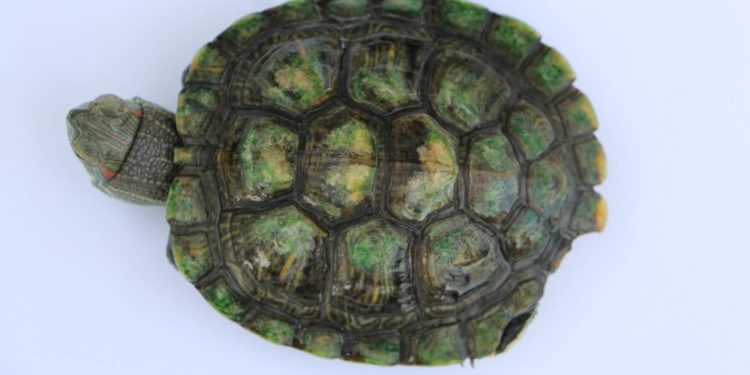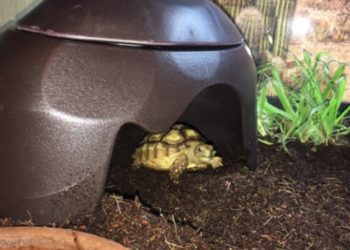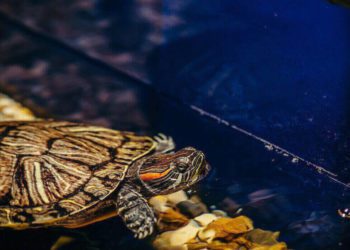As we know that the turtle is a sensitive animal and also they are the endangered species so we need to conserve them. When we pet the turtle we need to take care of them properly and observe whether they are going through some sort of diseases or infections that can affect their health and are very dangerous for them.
We need to take care of them at every cost and also do not be careless while taking treating any disease or infection. In this article, we will discuss turtle shell rot and will know everything regarding it.
The symptoms of the turtle shell rot, the causes of this shell rot and also regarding the treatment that should be provided to your turtle in order to cure the turtle shell rot. You need to take care of the turtle properly when they are suffering from this shell rot.
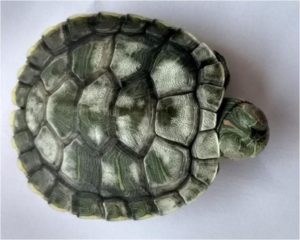
Contents
What is a turtle shell rot?
Turtle shell rot is basically an infection that occurs on the shell of the turtle and this can occur due to various reasons as the damage that occurred on the shell or the poor husbandry. The turtle shell rot is also known as the ulcerative shell disease in the language of a vet.
It can occur on either the top half of the shell of the turtle or the bottom half. The major reason for the turtle shell rot is dehydration due to which the body is in poor condition and they tend to have rotted on their shell. So as a responsible owner you need to take proper care of your turtle to overcome this turtle shell rot.
What are the symptoms of turtle shell rot?
The symptoms of turtle shell rot are found more in the wild turtle than the ones in captivity. But that does not mean that you will not notice a turtle shell rot in a turtle that is kept inside the captivity, though the symptoms will be subtle there will be some. You can see or notice various symptoms of turtle shell rot in your turtle-like you will notice a slimy layer on the shell, a reddish fluid under the shell plates and even there will be softening, flaking or lifting of the shell plates. You need to notice these symptoms quite carefully so that you can handle the situation of turtle shell rot beforehand.
If this disease is not observed or treated at the right time then there will be changes when the disease will progress that you will notice small pits are formed under the surface of the shell and it appears like someone is eating it away and because of it the pits are formed.
But the treason is the shell rot itself, due to which the pits are created under the surface of the shell of the turtle. With the further delay in the treatment, the shell of the turtle will start appearing uneven and that is not a good sign as you need to take care of the turtle shell properly.
When the turtle shell rot has spread a lot then you will notice that your turtle will start becoming lazy or less active and will eat less or will stop eating and will also start getting ill and all these symptoms are not at all good. So you need to take care of them and notice the shell rot properly on the shell of the turtle because when this shell rot is mild you will not see any difference in the behaviour of your turtle and they will appear normal to you.
In some cases, you will also not be able to notice many common symptoms or variation on the shell of your turtle, but you still need to be careful and notice the things properly so that the condition should not go from mild to the worst. In very serious cases there are chances of falling of the entire shell plate from the back of the turtle and this will lead to exposure on the nerves and the bones that are underneath the shell of the turtle.
So when you are petting a turtle you need to be very careful and observant so that you can notice each and every sign of the turtle shell rot and for that, you need to have the proper knowledge about the turtle shell rot and also you need to be aware of your turtle and their behaviour and also their body.
This turtle shell rot is even worst in the wild turtle as they are living in poor conditions and not proper care is taken of them, so they suffer from this infection even more than the ones that are kept inside the captivity and the reason is simple, that the captive turtle is getting a proper environment, food and everything they need as compared to the ones that are living in the wild.
What are the causes of the turtle shell rot?
As we know there is no one reason for the cause of the turtle shell rot, but several and we should know them properly so that we can prevent this turtle shell rot infection from occurring or further spreading. One of the most common causes of turtle shell rot is shell damage.
The damage to the turtle can occur due to many different types of injuries and these injuries can occur due to their aggressive behaviour especially male turtle and they tend to fight with each other or also with other female turtles. This fighting can result in the shell damage which further leads to the turtle shell rot. You can simply see cracks or broken shells when they are damaged.
When you notice cracks formed on the shell of your turtle and the reason behind it can be the suboptimal temperature and the humidity inside their enclosures.
The reason being that we know that some of the turtles live in a humid climate and when they do not get that type of environment and their environment is too dry then their skin tends to suffer and also you will notice cracks on their shell. Also, some of the turtles live in the dry or arid environment and if they are introduced to the humid climate inside the enclosure then their shell starts getting soft and too much dampness is around them. Due to this damp environment, the shell will start getting infected and will further lead to turtle shell rot that is not good for them if they do not get the right type of environment in which they usually dwell in the wild.
We know that there are various things that we keep inside the enclosure of the turtle, so make sure that there should not be something so sharp that can cause any sort of harm to the turtle and its shell because any type of shell damage can lead to the turtle shell rot.
If you will have a poor or dirty environment in which your pet turtle is dwelling then there are chances that your turtle can dwell on the condition of turtle shell rot. As we know that in a dirt environment lots of bacteria, virus, etc. starts dwelling which will cause lots of infections to them and this will lead to turtle shell rot. Even providing them with dirty drinking water can cause the turtle shell rot. You need to be very careful while providing them with a suitable environment.
So these are the various causes of the turtle shell rot that you should be aware of so that you can give them a proper environment and all the conditions that are suitable for the turtle and unfavourable for the turtle shell rot and no such type of infection can occur to your pet turtle and that is only possible if proper care of the turtle is taken.
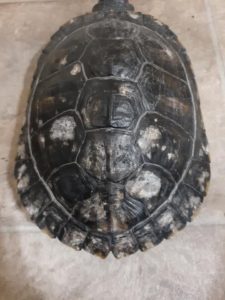
How to treat the turtle shell rot?
There are various ways of treating a shell rot of your turtle depending upon how mild or serious it is. According to that you can choose the type of treatment for them and prevent their shell rot or prevent it from spreading even further. Also, you need to notice the symptoms of turtle shell rot as early as possible so that you can easily treat the turtle shell rot.
When the turtle shell rot is minor or mild then you can easily treat it at home without any need to visit the vet and need to follow the steps given as below:-
- The first step is to identify the cause and the symptom of the turtle shell rot because only then you can give them the right type of treatment.
- You need to take out the infected turtle from the water and keep it dry until the shell has healed properly. You just need to get it when you are cleaning the shell otherwise, it is advised to keep the shell as much dry as possible.
- Clean the turtle gently and with a mild soap that will not harm your pet turtle, with the help of a soft brush scrape off any type of algae, dirt and the damaged pieces of the shell from the outer layer of the shell plates.
- After cleaning your turtle properly you need to make sure that they get proper UV light for at least 20 minutes in natural sunlight or with the help of a UV lamp.
- It is recommended to keep the turtle warm because it will help in the process of healing and that too a bit faster.
- You can use an antiseptic that is safe for them to disinfect their shell and which will help in the healing the shell of your turtle. Do not use the antiseptic on their eyes not even by mistake because it can cause irritation to their eyes.
- After the antiseptic, you can apply a healing cream to their shell so that the shell of the turtle can heal properly.
- The results will not be seen in the beginning, you need to continue with this treatment process for about a week to see the healing in the shell and if you do not notice much difference after few weeks of treatment then you need to visit a vet.
Note:
When you notice that you’re your treatment is not having any effect on your pet turtle even after weeks of treatment and also when the turtle shell rot has gone to the worst stage then it is recommended to visit a vet.
A vet is recommended because they know how to deal with even the worst of turtle shell rot conditions and also they are trained to handle the turtle, so do visit a vet when you have no clue what to do next.
You can follow the above-mentioned steps in order to treat the turtle shell rot properly and these steps are easy to follow without any sort of hassle. If you do not know what to do or the situation is out of control, visit a vet.
Conclusion:
The turtle shell rot is an infection that dwells on the shell of the turtle and you need to treat it properly so that your pet turtle lives a happy and healthy life with you. Also, the turtle shell rot should not be treated carelessly proper treatment should be given to your turtle so that it does not get worst with time.
The turtle needs your care and love so that they do not have to go through such type of diseases or infections and that can be only achieved if you will give them the apt environment to live and there will be no sort of issues while they are staying in the captivity. You would also love to see your turtle happy inside their enclosure and that is only possible if they will not have any sort of infection or disease.
More:


